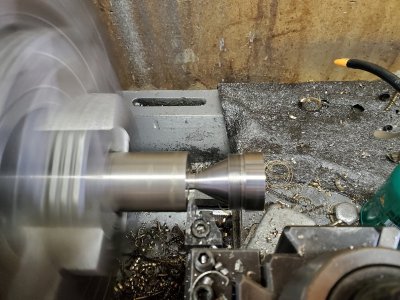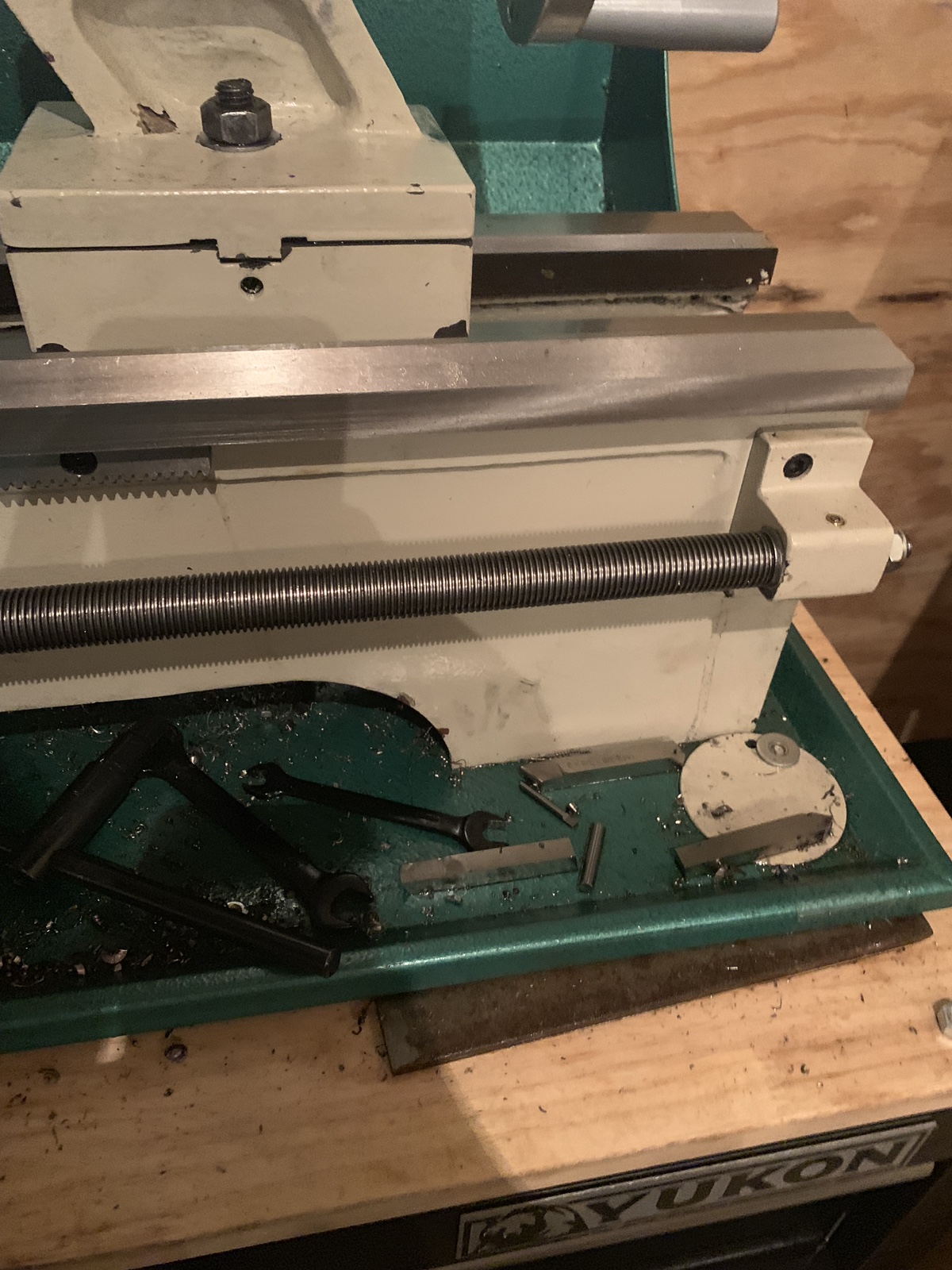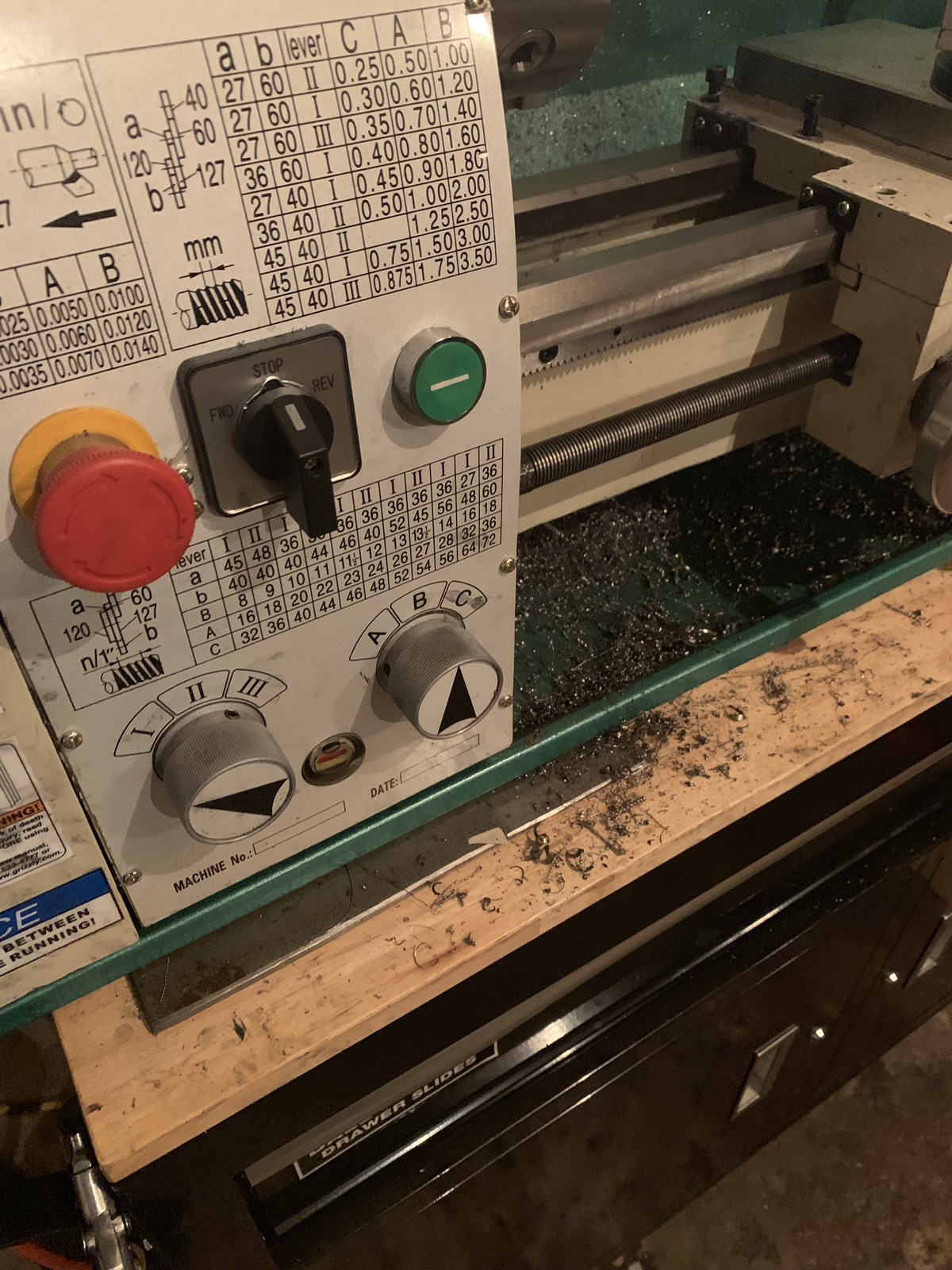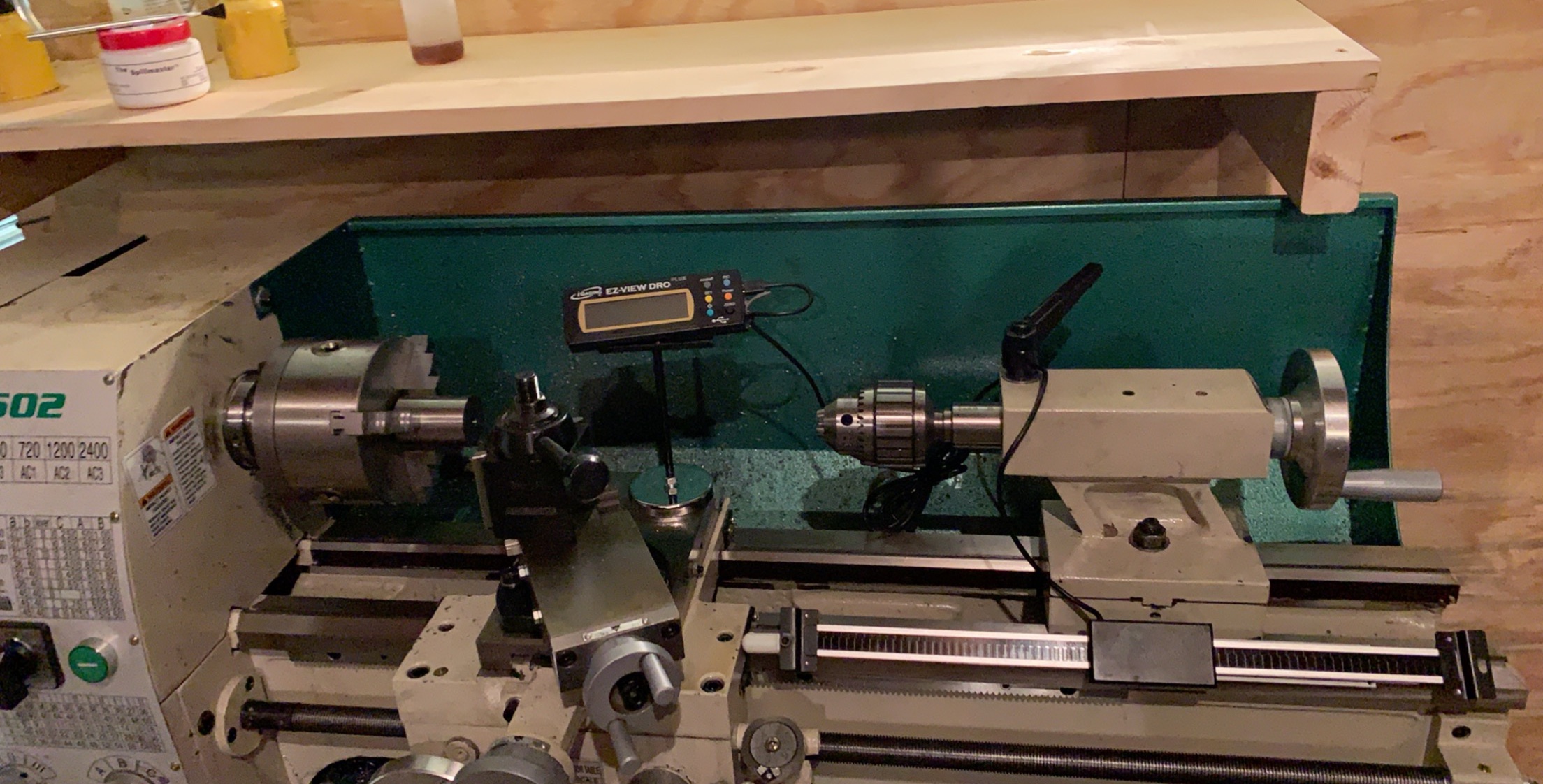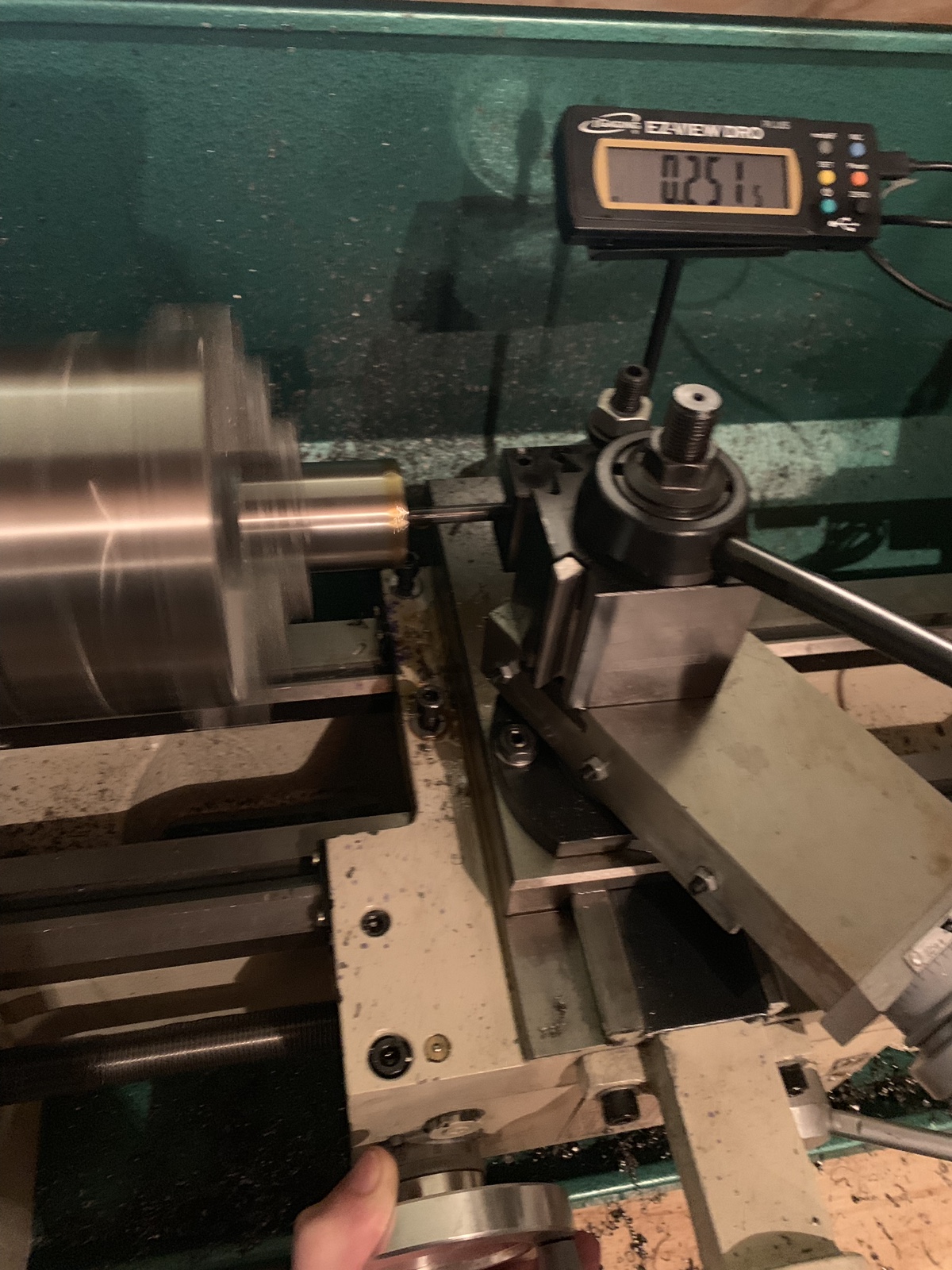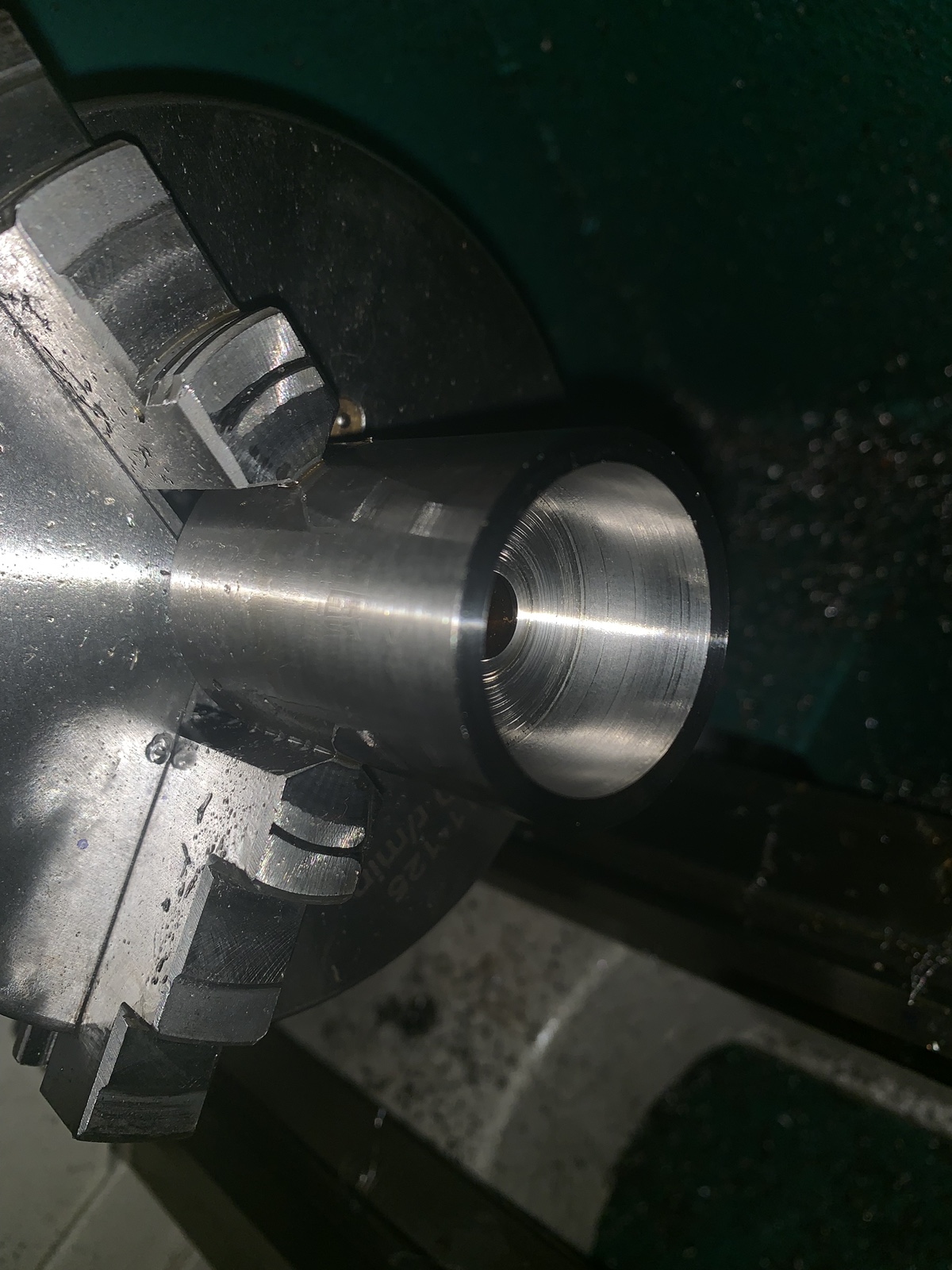I see, i guess my local home depot does have it.I was referring to the PVC sch 40 PLASTIC pipe. I am sure you could get some practice with the black pipe but its not nearly as forgiving which to me is very helpful when in "Learning" mode.
Well if I'm going to level my lathe I'm tempted to weld up a steel bench for it but i'm open to changing the tool cabinet but i would have to take the rollers off. right now i have 2 1/4" steel plates sitting under the lathe and the wood top. I could buy a sheet of 3/4" plywood and screw down 2 layers of that to the wood top.You should level your lathe, period. I would suggest doubling or tripling the thickness of your current top, laminating the wood so you have a solid base. It needs to be inset inside the lip on top of the chest if there is a raised lip. Get it solid, then level the lathe on top of that. Even if you move the base cabinet it shouldn't alter the lathe level too much. Get it level, get the tailstock aligned, or you will not be able to do precision work.
This bar that you linked to is the one I use but his may have grinding marks on it. I would ask him to send you pics of the two he has on sale so you can decide if you want it. He started out with 9 of these exact bars, seems like he has sold 7 of them. The advantage to this bar is that it uses either 0.007" or 0.002" nose radius flat top inserts with positive axial rake. Of course, you have to wait until they show up on ebay or pay retail but this is an awesome geometry. The other thing to do is to be patient and wait; another will show up eventually. The hard thing is that since I published that boring article, you are now competing with all the other guys!
As for the other bars, read the article I wrote and think about the geometry a bit and then make your choice. I certainly cannot choose for you. You might also start a thread and ask the guys. I know the SCLCR boring bars are popular because there are a ton of cheap bars sold in sets. The guys will be able to tell you how well they work.
If your drill bit is small, it is flexible, especially a jobber drill. A screw machine drill of the same diameter will be shorter and, consequently, stiffer.
I offered $50 on that bar and he countered at $55 but I haven't accepted yet because i would rather have a longer bar than 4". I would rather get a carbide boring bar that takes ccmt inserts, i can only find CDCD 51 with a .015 nose radius.
I also have to buy a tool that will work for turning the outside of the baffles (60 deg). The picture is from Ecco Machine, but my parting tools sucks in this lathe, it wont even cut straight with a locked caraige. I'm not sure what tool what be best for this any suggestions?


